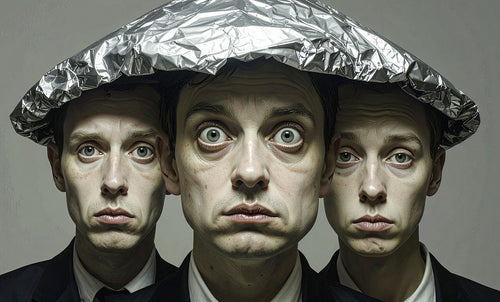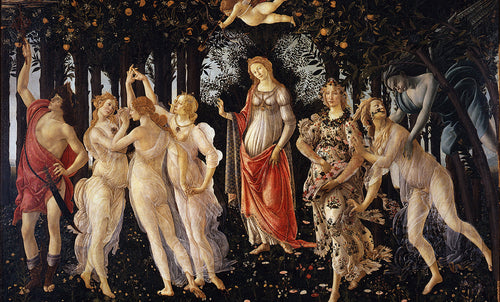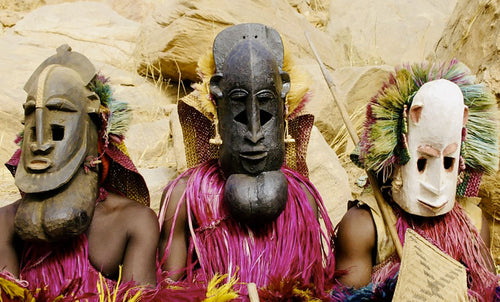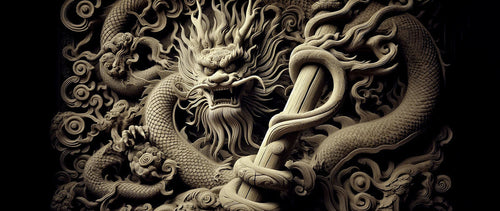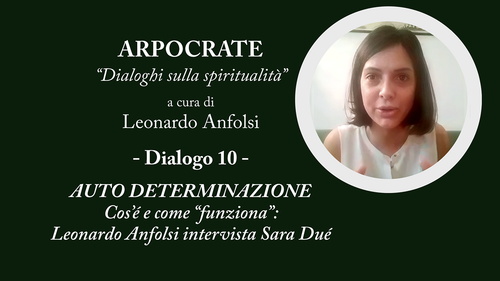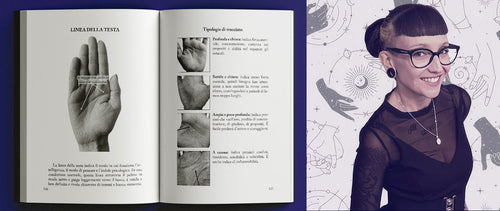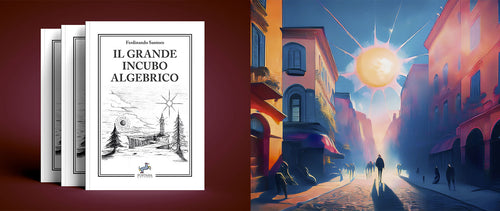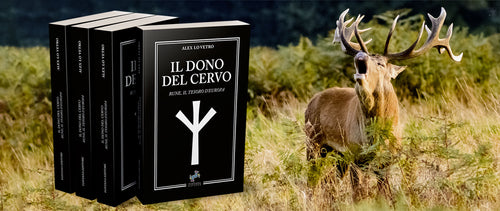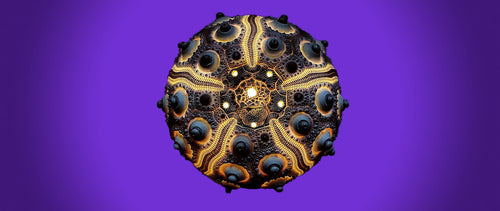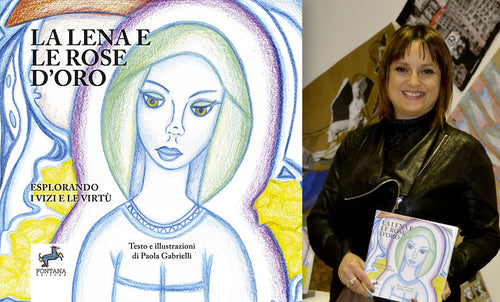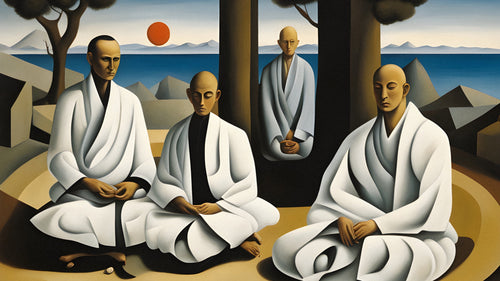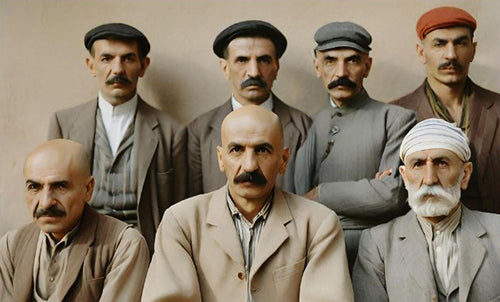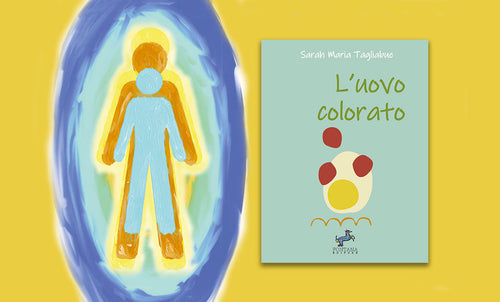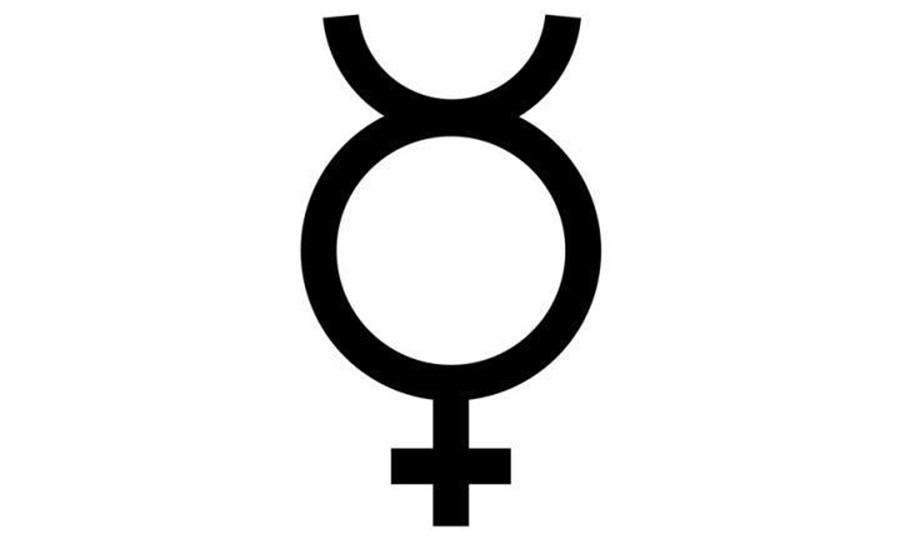
Alchemy of Paracelsus root of Homeopathy and Anthroposophy – 1
Leonardo AnfolsiIn fact, Hahnemann experimented among the first homeopathic medicines with the raw materials, products and by-products of alchemical operations and, let me say, with a certain expertise: hepar sulfur, tartarum stibiatum or antimoniatum, antimonium tartaricum or antimonium crudum, cuprum vitriolatum etc.
This topic is complex and requires patience in considering the substances, their particularities, their relative poisonousness, the doses and how these are conceived, and then their effects, whether they are on the pathogenic agent and the pathological picture, or on the whole system or on a specific function. Moreover, where post-Hahnemannian Homeopathy has wanted to experiment - the studies of Boericke, Nash and Reckeweg on the venoms of various snakes come to mind - one realizes that there cannot be a general theory called " poisoning according to homeopaths ": in fact the homeopathic dynamizations used for naja and lachesis, cobra and rattlesnake venoms, are very different from each other. Obviously, whatever the dynamization chosen, it must cure not only a similar pathology, but in this specific experimentation also the snake bite itself, and in an evident, immediate, complete way.
Paracelsus states that poison is a component that can be removed from a principle or a compound, while elsewhere he is cited because he asserted that everything can be poisonous depending on the quantity used; which, if you look closely, is not a contradiction. This last Paracelsian quote begins a short treatise, written for the government agency APAT, on hormesis.
In all honesty and fairness, the authors of the above document inform us of the problem of dogma: if we were to set up a more general research on the dosage issue, there is a dogma that has long discouraged full-field research on the subject. Obviously, the stone guest is always her, Homeopathy, as will be the so-called memory of water.
Translating for the layman, hormesis deals with the presence of substances in any type of organism, be it an ecosystem, the planet, a human being, a tissue, but, also, hormesis concerns a certain type of response to the stimulus given by a substance, which response is detected in two phases: "Hormetic responses, in general, show a modest stimulation at low doses (...) and an inhibition at high doses. Therefore, in order for the "qualitative" definition of hormesis to be satisfied, both the stimulatory and inhibitory dimensions must necessarily be present" .

I take this graph from the cited text. The dose-response models are: linear, “threshold” and hormetic.
The “threshold” model and the hormetic model have in common the response to high doses, while, at low doses, the hormetic effect should cause the opposite and non-proportional effect to that observed at high doses. These principles are considered theoretical but immediately applicable to experimentation to resolve questions of doses and synergies, but they also imply the above-mentioned theme; here in the note below are the details of the studies carried out for the government agency APAT [1] .
Let's see how different medicines have crossed paths throughout history thanks to a particular substance that has always defined Alchemy: antimony.
Antimony has always been so important in Alchemy that in ancient times it defined another product of distillation as a sort of “ derivative ” of it: Alcohol. Alcohol would be nothing other than al+khol = l'+antimony, since khol is notoriously the black pigment derived from it which, when made into bhasma_ and oleolite, blackened the eyelashes and the edge of the eyes; and yet today we still call a topical preparation for the eyes collyrium. This is simply to say how important antimony was back then, to the point that another laboratory product, high-proof alcohol, which was once very rare, ended up taking its name.
It is common practice even today in the marshy areas of Kashmir to use antimony as a repellent, everyone smears it to blacken the edges of their eyes, to prevent mosquitoes from piercing their eyes, as it is similarly used throughout the pastoral world to avoid infections.
In Homeopathy, antimonium crudum, which is stibine, is its inorganic salt, antimonium tartaricum is its organic salt.
Subsequently, in the industrial pharmacopoeia, the association of antimony with potassium led to the formulation of tartar emetic (potassium tartrate and antimony), while its association with sodium encouraged the synthetic production of fuadins.
And we come to Algarotti's emetic powder, and that of James. The first was an antimony oxychloride that he prepared by mixing and precipitating antimony butter in spirit of salt, calling it " pulvis angelicus "; the second was a mixture of one part of antimony oxide and two parts of calcium phosphate: but it is that they were often counterfeited with simple stibine powder, also for this reason Paracelsus got so angry, even with the pharmacists.

And in fact, since antimony would be stibine which is found in nature bound to sulfur as a sesquioxide, ingested in powder form in minimal doses it works, yes, as an emetic, because it reacts with the hydrochloric acid of gastric juices: but these bind the sulfur and therefore make pure antimony very active on the walls of the stomach, producing cramps and therefore vomiting. If the quantity is minimal the side effects are imperceptible, indeed, they increase the emetic effect, but if you overdo it you get even serious intoxications. In Homeopathy, with Antimonium Crudum, the effect that comes from that identical substance but dynamized according to the methodology taught by Hahnemann is sought: it manages to cure precisely that type of stomach cramp that would derive from the intake of too much antimony. And this also in an animal, which demonstrates the groundlessness of the obstinate opinion of many, according to which homeopathic medicines would be placebos.
As is known, in some cases homeopathic substances, being dynamized, have the opposite effect of the same substances in ponderal doses, in other cases they have very similar effects. And I would like to remind you that in homeopathy there is a danger that is generally little known: when the symptom is acute or very acute and we have to administer some potency of a remedy, especially if obtained from a poisonous substance or plant, let us always remember not to administer a higher potency (e.g. 30ch) and then a lower one (e.g. 4ch), that is, NOT to go back with the “ch”, the “D” or the “K”, since in this case there is the risk of a sudden worsening that in some cases turns out to be unstoppable. An example of this possibility is appendicitis that can become fulminant peritonitis. Let us avoid it absolutely, let us always go forward, that is, by increasing the dynamization values: let us visualize it clearly.
As has been said, the principle of homeopathic dynamization has always been opposed by the allopathic point of view which, strong in Avogadro's theory, does not contemplate any energetic phenomenon, bio-magnetism or any resonance, but only the possibility of even a minimal residual weight of substance in the excipient: when one passes from 3ch to 4ch dynamization, no trace of the active substance would be detectable.
For allopaths, dynamization makes no sense: for them, the suction of an active substance that is stirred in the excipient does not involve any interaction with the former or any potentiation of the latter, for conventional allopathic medicine it is only a question of " dilution "; this, in fact, would seem strange to anyone who was aware that among the most innovative research there are precisely those that concern a " hormetic " dose/response model - as has just been said [2] - that is, completely similar to the functioning of many homeopathic remedies. In this sense, I report this research by an Italian team on the effect at mitochondrial level of a sufficiently high dynamization of Gelsemium, a very well-known remedy of homeopathic materia medica [3] . The experiment used the above remedy at 2 ch (corresponding to a gelsemine concentration of 6.5 × 10-9 M) and significantly modified the expression of 56 genes, of which 49 were reduced and 7 were overexpressed.
English: Homeopathy has certainly borrowed from Alchemy the dynamization of a substance, but through the underlying concept, that of energy. Those who have experience with this factor, energy, know well that there is not only one level, it is not just that which flows and has no tangible form; rather, the Greeks, with the etymology of this word, considered that it "arises from within", thus capturing a typical factor of the living, if not a contributory cause of it. Without going into too much detail, it is enough to remember how in Asia the two main subdivisions of energy concern a bio-magnetic flow in the body that moves through the meridians and points indicated by Acupuncture in Chinese Medicine and, the other, the emotional-functional energy that ignites sensations and emotions, but also moves the eyelids, makes you speak or breathe: an energy called prana that is linked to channels, cursors, chakras and also to breathing, therefore to the nervous system as well as the endocrine system.
When we talk about external energy, then, it is the West that comes to our aid by telling us that not only is everything endowed with a difference in potential - given a minimum conductivity and two poles - but that it is also endowed with frequencies, or that everything is a frequency. With the implications of this fact we would already have a basis for understanding an active metaphysics, or how a factor of a " metaphysical" order can become physical and detectable , such as for example the possibility - increasingly pressing - that water can retain traces of the substances with which it comes into contact, or that the sky was also in the room.
In this sense, in similar possible changes of perception that may imply a true scientific possibilism - radical as well as plausible - the entire mathematical path that would precede it is authoritative, formulas, algorithms and strings, a linear logical system in which the syntheses have no leaps capable of overcoming this dialectic that by now has been set in an ideological-jurisprudential way. Then, when Bohr or Maxwell come out with their metaphysics, it seems to us that we have returned to the Stoa of Athens, or to the times of Buddha and Lao Tse, when instead we are in the drama of science and the West, where there has been a change of Church without a shot being fired, where the founding theme is not reality but, again, Truth.
Translated into the terms of a theatrically represented history of art, it is as if against the backdrop of an eighteenth-century English hunting painting, with its dark tones and a fox in the distance fleeing from the dogs, the stream and the hill, from Leonardo to Man Ray, from Van Eyck to Picasso, all painters continued to express their art, but only against that backdrop; Above the backdrop of an English hunting landscape, here appears the Mona Lisa, the Arnolfini Couple, Guernica, etc.
Never a jolt.
But beyond the problem of an ideological system, scientific experimentation is affected by the expectation of precise results that have the support of a previous theory and above all of adequate funding.
The fact of how the observation of reality changes depending on how we approach the details in our experience, both verbally and pre-verbally, does not seem to interest those who already have the winning card of the positivist-reductionist party; therefore the invasiveness of such an ideology is considered a sort of inevitable cultural background, even if it has no rational justification but is on the contrary the fruit of a mere historical reaction - equal and not even so contrary - to the theological system of the church that preceded it.
The invocation of a saving truth seems to me to occupy a lot of space in the minds of the most ideologically driven scientists, that is, those most attached to the concept of “ objectivity ,” a very cumbersome concept that has been identified by shrewd anthropologists as an embarrassing aftermath of the concept of “ divine omnipotence ,” but made even personal, as well as ecclesiastical, since it is held and conferred only by the caste of the holders of the current truth to individual leading figures. The others simply feel honored to belong to the great-family-of-those-who-are-on-the-side-of-the-buttons and do not notice the inner emptiness – not only semantic – in which they enthusiastically participate.
This attitude is evident when faced with the age-old problem of forced vaccinations, an idea inextricably linked to the saving principle of herd immunity, opinions that seem incontrovertible to them, but on which – comically and dramatically – the white dove of economic-political choices descends, evidently much more “objective” than scientific ones.
The salvific function of the Agnus Dei, with its apotropaic charge, is spread – as in every self-respecting war and plague – over the entire population like an inevitable sacrament.
An important distinction with respect to Homeopathy is that in Alchemy it would not generally be necessary to dynamize a substance with successive sucussions, given that alchemical drugs, to put it in homeopathic terms, are taken at approximately 1 ch., which means from one to seven drops diluted in a glass of water, wine, if not in a cup of broth or a specific herbal tea, depending on the case.
For the Alchemist, it has always been essential to heal a patient by instilling strength in him: Leonardo Fioravanti's objection to the bloodletting mania typical of the doctors of his time is not only reasonable, but well-founded. Having traveled with Spanish princes and nobles, he points out that in Mediterranean Africa there are bloodletting specialists who choose precise points, lunar phases and times of day, and type of intervention depending on the symptoms, the general picture and the humoral complexion of the patient. And he adds that the only multipurpose bloodletting would be the one obtained with a small amount of blood coming out from under the tongue, near the salivary orifice, until filaments come out. Probably the same barefoot phlebotomists that Fioravanti saw with his own eyes were recently met by French anthropologists who were doing research in the Atlas Mountains.

It was Johann Gottfried Rademacher (1772-1850), a contemporary of Hahnemann, the father of Homeopathy, who connected the new Homeopathic medicine to Alchemy: he published a book of 1600 pages, Erfahrungsheillehre (i.e. the Empirical Practice of Medicine) in 1841. Parallel to Homeopathy, a new science was born that Rademacher did not want to reveal as Alchemy but as Organopathy: we can say that this new science wanted to adhere more to an empirical symptomatology than to a toxicological similarity as is the case for Homeopathy. The subtitle of his text adds “ Justification of the empirical practice of Medicine of the Ancient Alchemist Physicians, misjudged… etc ” since Rademacher worked in the field for twenty-five years, observing the precision of Paracelsus' theories and the results obtained from his arcana and those proposed by his descendants, adapted to place and season. The Paracelsian theory regarding the organs and their connection with the whole, inextricably links Rademacher's work to the other famous European Paracelsian of the time, Cesare Mattei (1809-1896). Since many of Rademacher's preparations were then clinically tested by homeopathic doctors and accepted in their medical subjects, or had homeopathic testing and use thanks to James Compton Burnett (1840-1901), we can well say that Rademacher was the father of contemporary German Alchemical Medicine, while Burnett will be one of the main ferrymen of Homeopathy into the new century.
Another contemporary of Hahnemann was Goethe who, with great intuition, was placed, by Von Bernus, at the dawn of a new, though traditional, pan-European and initiatory conception of science and medicine; Steiner was also of the same opinion, to whom goes the credit of having embodied, with Formisano/Kremmerz, with Mattei and with other European Adepts, the reality of an Alchemical Dynasty destined to reign with the use of special salts.
The external/exoteric reality related to this “ prophecy ” of Paracelsus took a dynastic and an industrial form: the form of Alchemist rulers such as Christina of Sweden and Francis I de Medici, of enlightened kings such as Ferdinand III, Cosimo I and Lorenzo de Medici, and therefore also took the form of large chemical and pharmaceutical industries in the perpetual search for new molecules to patent. In other words, a further and final exoteric form of the salia cited in the Paracelsian prophecy as commented by Van Helmont and Glauber.
It is inevitable that there are medicines for the masses - inevitably manipulative as to their ready use - and medicines for those who understand healing - that question them on how long they live and how. After all, only the naive believe in a golden age, while those who are wiser see in it a myth useful for educating us to visualize the unexpected good that, in any case, life can give us if we knock busily on its door.
Every day, though.
Leonardo Anfolsi
Notes:
[1] - http://www.isprambiente.gov.it/contentfiles/00003600/3694-miscellanea-2006-07.pdf/
[2] - ibid.
[3] - https://bmccomplementalternmed.biomedcentral.com/articles/10.1186/1472-6882-14-104



